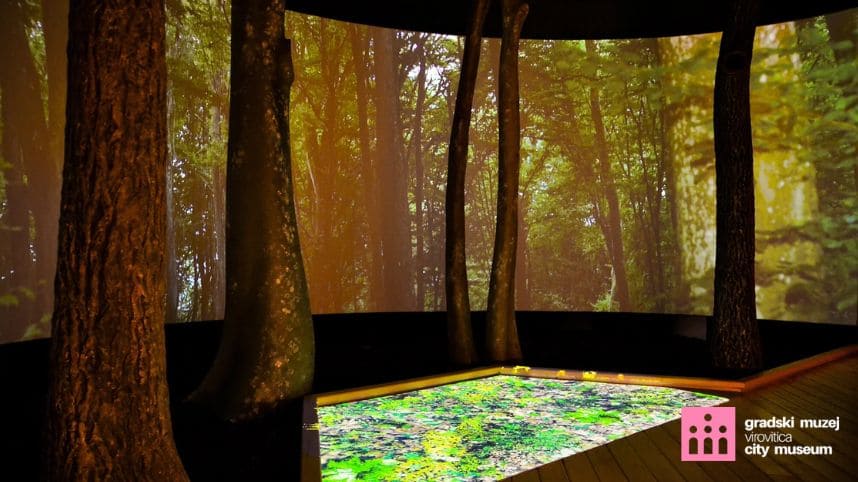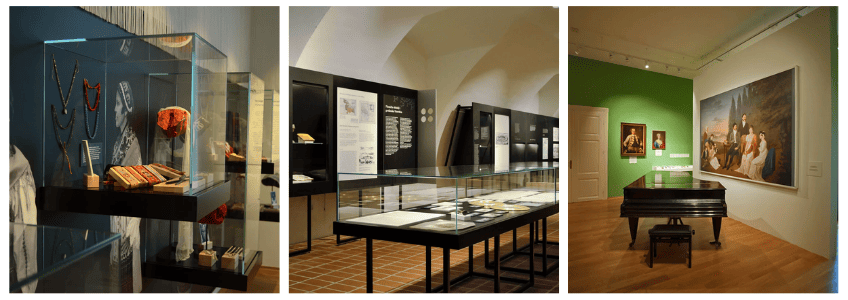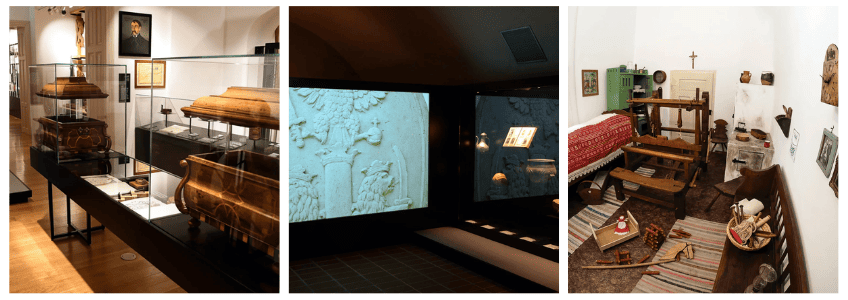About the Museum
Founded in 1953, the Virovitica City Museum has always been closely tied to the stunning Pejačević Castle, its long-time home. Thanks to the large-scale integrated project “5 to 12 for the Castle” (2016–2019), the entire castle was revitalized and transformed into a vibrant museum space.
Today, the Museum is more than just a place of preservation. It is a living cultural hub that collects, protects, and shares valuable heritage while actively engaging with visitors on-site and online. With its dedicated staff, the Museum plays an important role in the cultural life of Virovitica and beyond.
Once a “small museum,” it has now grown into a “big one” — telling the fascinating story of the deep connection between Man and Wood, while remaining firmly rooted in the local community. Our slogan #smallbigmuseum perfectly captures this spirit, making the Museum a must-see for anyone wishing to experience the cultural heart of Virovitica.
Step into the Virovitica City Museum and Journey Through Centuries of Art, History, and Culture
Cultural and Historical Department
The Cultural and Historical Department of the Virovitica City Museum brings to life the rich past of Virovitica from the 14th to the 20th century. Its eleven collections showcase everything from coins, sacred heritage, weapons, furniture, and textiles, to books, photographs, and everyday objects.
Highlights include rare 15th- and 16th-century artifacts such as arquebuses, a sword, halberds, and a church bell, as well as the Baroque wooden inventory of the Chapel of the Holy Cross in Sedlarica. Visitors can also discover Maria Theresa’s charter to Marko Aleksandar Pejačević and a remarkable hoard of 16th- and 17th-century coins hidden in a buried ewer.
Together, these treasures tell the story of Virovitica’s political, cultural, and social life across the centuries, making the department a must-see part of the Museum.
Ethnological Department
The Ethnological Department highlights the rich traditions of Virovitica and the Slavonian Podravina region. Its collections feature beautifully embroidered folk costumes, woven textiles, household items, pottery, and tools once used in everyday life, dating from the late 19th to the 20th century.
Beyond preserving the past, the department also explores how customs and crafts have evolved, documenting cultural change through photographs, videos, recordings, and even modern souvenirs. It offers visitors a vivid insight into the everyday life, creativity, and identity of the local community.
Archaeological Department
The Archaeological Department takes visitors on a journey through time — from the Neolithic era to the Early Modern period. Excavations around Virovitica have revealed fascinating finds such as ceramic and glass vessels, bronze, silver and iron jewelry, fibulae, medieval swords in scabbards, spearheads, knives, cannonballs, coins, and architectural fragments.
A true highlight of the collection is the Museum’s oldest exhibit — a woolly mammoth jaw and tooth from the Upper Pleistocene. Together, these treasures offer a vivid picture of the life, culture, and craftsmanship of the people who once inhabited the Virovitica region.
Art Department
The Art Department showcases Croatian artistic expression from the 18th century to today, including painting, sculpture, graphic arts, applied arts, photography, new media, architecture, and urbanism. It also highlights the creative output of Virovitica over the past 40 years.
A highlight of the department is the Branislav Glumac Collection, donated in 1982, featuring works by renowned contemporary Croatian artists such as Đuro Seder, Ljubo Ivančić, Oton Gliha, Miljenko Stančić, and many others. The collection continues to grow and evolve, offering visitors a dynamic view of Croatia’s artistic heritage.
Documentation Collections
The Documentation Collections preserve the Virovitica City Museum’s records and research materials, including periodicals, exhibition files, publications, and audiovisual archives. These collections provide a unique insight into the history of the Museum, the city of Virovitica, and its surroundings.
To make these materials more accessible, the Museum is actively digitizing and cataloguing its archives, allowing visitors and researchers to explore Virovitica’s cultural and historical heritage in a modern, user-friendly way.
You can find more about us here.


